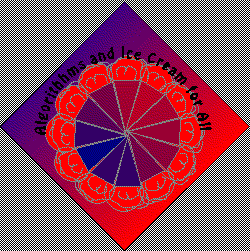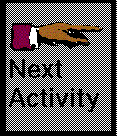What you have in your hands is a map of the town of Iceberg. It's a somewhat unusual way to draw a map. The lines on this map represent streets and the dots are street corners. The map doesn't have any houses on it, but we do know that there is at least one house at each corner.Iceberg would be a nice place to live, except for one problem: you can't get ice cream anywhere in town. So Ivan and Ivana Icicle have founded the The Icicle & Iceberg Ice Cream Company in order to do something about that. Ivan and Ivana want to do something good for their town, so they are going to build ice cream stands all over town where people can go to buy ice cream. They want it to be easy for the people to get ice cream. They also want to make money.
At first, Ivan and Ivana had hoped to put an ice cream stand on every corner, knowing how, in the summertime, they would just rake in the money. But ice cream stands are expensive to build: you have to buy all that lumber, and nails, and windows, etc. Then you have to put big freezers inside them, and pay people to work in them all day, and so forth. It didn't seem possible to sell enough ice cream to pay for ice cream stands on every corner.
They figured, however, that people would still eat lots of ice cream if they only had to walk down the street to get it. Their second plan was to build the ice cream stands so that people could get ice cream either right there on the corner where they live, or at the very most, have to walk down only one street to find a corner where there was an ice cream stand.
Now, all they have to do is figure out where to put the ice cream stands. Where should they put them? How many do they have to build?




